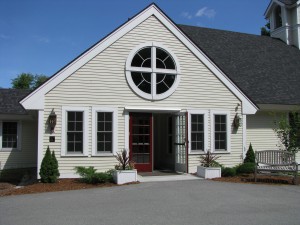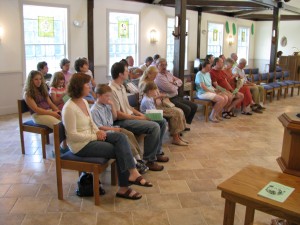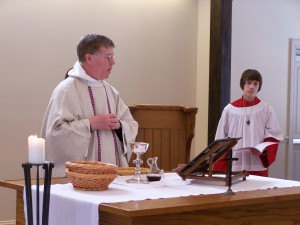What if you have no religious background at all? What if you’ve never stepped inside a church, or you’ve been only to a few weddings or funerals? You may have heard some terrible things about churches–that they ask you to believe “six impossible things before breakfast” as Alice Through the Looking Glass put it, that they’re full of self-righteous people or people who all have the same political beliefs, that they’ll try to get their hands on you and once they do they’ll never let you go. But maybe you’re also  intrigued by the idea of being part of a group of people who believe in a mysterious higher power they call God and who care about each other and about justice and peace in the world. Maybe you’d like to explore religion a little, but are just afraid that you’ll be lost in the strangeness of a worship service, make an utter fool of yourself by doing something wrong.
Well, you’re not alone. An increasing number of people in our society have no religious background. Interestingly, New Hampshire has (after Vermont) the highest percentage of people with no religious affiliation of any state in the U.S. And yet, a lot of people are searching. They sense that something is missing in their lives, in the lives of their families.
This is a familiar story for us at Holy Cross. A number of us have been where you are and came to Holy Cross from no religious background at all. So what do we say to someone like you? Well, first of all, “come and see.” You can only begin to learn by first experiencing.

Drive into the parking lot, walk through the doors. Chances are our vicar or interim priest will be there at the door to welcome you. They’ll recognize you as a visitor, but they won’t make a big deal about it to embarrass you. Inside, in what we call the Gathering Space, you’ll be handed a bulletin by the morning’s greeter. This contains readings, prayers, music for the day. You’ll proceed through double glass doors into the Worship Space, a lovely bright room centered around the Altar Table made by one of our parishioners. You’ll find a seat, probably choosing not to sit in the front row! (No reserved seats. Sit anywhere.) There will be quiet music playing, organ, piano or guitar. Settle yourself. Look around. Everyone will look like ordinary folks, which is what they are.
As the music concludes, the priest will welcome everyone and give a very brief introduction to the service for the day. Newcomers like you will be helped to find the beginning of the service in the bulletin and how to follow along. Then there’ll be an opening song or hymn, followed by a prayer, then readings from the Bible. You can sing or not, as you feel comfortable. The Bible readings may seem strange to you. After all, they were written two to three thousand years ago. And yet, human beings are human beings, and in the homily or sermon that follows them, the priest will relate what the readings say to life today. Episcopalians don’t believe that the Bible is to be taken literally word for word. They see it instead as the inspired story of people like yourself, seeking to find deeper meaning in life and sound guidance for living.

After the homily, everyone will stand and join in saying the Nicene Creed. Again, you won’t understand all of this text, which dates from the fourth century. Indeed, most of the Holy Cross congregation could probably not explain every bit of the creed. It’s a symbol of Christian belief, recited by Christians around the world and through the ages. Just take it as a sort of religious pledge of allegiance. (You can join in saying it, or not–no one is going to be checking up on you.)
Next come the Prayers of the People, where the congregation joins in prayer for the sick, for members in the military, for those celebrating birthdays and anniversaries, for those who have died, and for needs around the world. Just follow along here. It will all be written in the seasonal worship booklet that you’ll be directed to. The Prayers of the People are followed by the Confession of Sin and absolution. This is our way of saying together out loud that we’ve not been perfect, that we come together and before God as broken people, asking and receiving forgiveness. You won’t hear a lot about sin in the Episcopal Church, but we do find it comforting to know that this is one place in life where we’re not constantly being asked to perform and measure up, where we can just admit together that we’re not perfect.
After the Prayers of the People comes the exchange of the Peace. At this point, those seated near you will shake your hand, welcome you in the name of Christ, perhaps say they’re glad you’re here. Just shake their hands back.

Then the service moves from what we call the liturgy of the Word to the liturgy of the Table. There’s another song or hymn and bread and wine are brought to the Altar. An offering basket will be passed among the congregation; you can put some money in it or not–again, no one is watching or judging. The priest and congregation then begin what is called the Great Thanksgiving, a prayer (partly sung and partly said) of thanks and blessing in which the bread and wine, representing our lives (what we have made from the raw materials of wheat and grapes that God has given us), are transformed sacramentally into the Body and Blood of Christ. Don’t get hung up on the theology of all this–plenty of time for that later if you’re interested. Just focus on the beauty of the prayer and the ritual. Understand that this is about you being fed by a loving and forgiving God. If you’ve not been baptized, you will probably want to remain in your seat when people move forward to receive Communion. That’s fine–others will remain seated too.
After Communion, the service concludes pretty quickly with a short prayer, blessing and a concluding hymn. You can remain to listen to the short “postlude” music after the service, or you can leave. You can linger in the Gathering Space for coffee and refreshments, or go directly out to your car.
Maybe this experience will tell you that you never want to try Holy Cross (or any church) again. Maybe your interest will be aroused and you will want to come again, or try another church. If and when you want to learn more, about what you’ve experienced or about other questions you have, the priest is a very ready and reassuring person to talk with. He–and indeed the whole Holy Cross congregation–will take you wherever you are, for who you are, and do their best to serve your needs. But it will always be up to you to decide the pace and direction of your own spiritual journey.